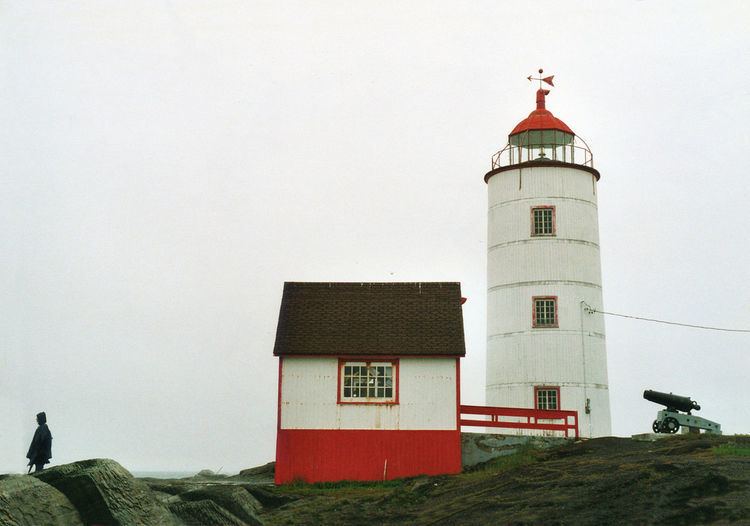Year first constructed 1809 Focal height 16.5 metres (54 ft) Opened 1809 Phone +1 418-898-2730 | Construction stone tower Height 17 m Province Québec | |
 | ||
Location Notre-Dame-des-Sept-DouleursQuebecCanada Tower shape cylindrical tower with balcony and lantern Markings / pattern white tower, red lantern and trim Similar Pot‑à‑l'Eau‑de‑Vie, Pointe‑au‑Père Lighthouse, Cap‑des‑Rosiers Lighthouse, Phare du haut‑fond Prince, Phare de l'Île‑aux‑Perroquets Profiles | ||
Île-Verte Lighthouse is a lighthouse on Île Verte in Notre-Dame-des-Sept-Douleurs, Quebec, Canada. Completed in 1809, it is the oldest lighthouse on the Saint Lawrence River and the third oldest in Canada. The Lighttower, which is 17 metres (56 ft) in height.
Contents
History
Constructed between 1806 and 1809 on behalf of Trinity House in Quebec City, the lighthouse was responsible for the improvement and surveillance of the lower Saint Lawrence River. It was among the first lighthouses built in Canada, and was the first built on the banks of the Saint Lawrence. The Île-Verte Lighthouse illustrates the expansion of trade and navigation in the early nineteenth century and was an important milestone in the development of a network of safe waterways in Canada.
Keepers
The last lighthouse keeper left in 1972.
Legacy
The Île-Verte Lighthouse served as a prototype for the construction of other lighthouses along the St. Lawrence, by its masonry construction, its cylindrical shape, small size and its overall simplicity. The longevity of the building and its continued use attest to the success of this design, which proved highly functional, as well as to the quality of materials and construction.
Heritage
The Île-Verte lighthouse reinforces the austerity of its location on the coast. The building is an important landmark in the region and is now a tourist attraction and a source of pride in the region.
Federal Building, it was classified a historic monument of the National Historic Sites of Canada in 1974 because of its historical importance, its relevance in terms of architecture and the special place it occupies in its environment.
